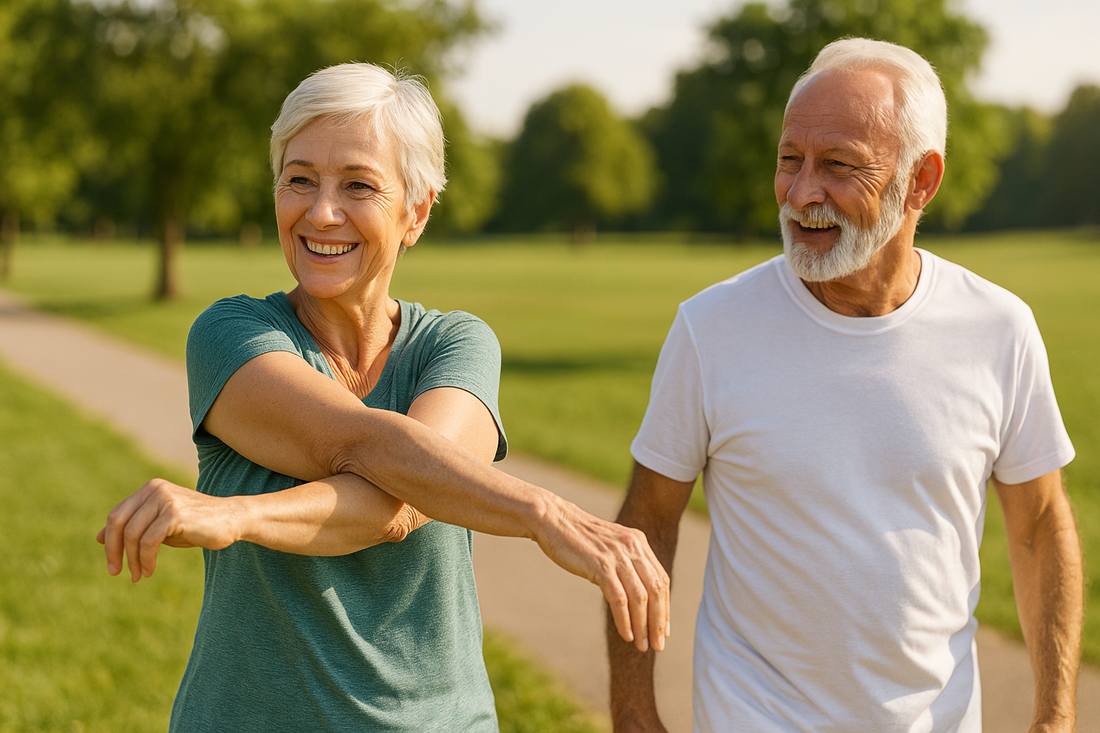
Low-Impact Workouts for Seniors: Stay Active Without the Strain
Introduction
As we age, staying active becomes more about consistency and safety than intensity. Many seniors avoid exercise out of fear of injury, but low-impact workouts provide a sustainable, joint-friendly path to better health. These exercises improve flexibility, strength, and balance — all while protecting your knees, hips, and back.
Low-impact fitness doesn’t mean “easy” or “ineffective.” In fact, with the right approach and tools, it can enhance cardiovascular health, improve mobility, and even boost mood and mental clarity.
Benefits of Low-Impact Workouts for Seniors
• Joint Protection: Exercises that minimize impact reduce stress on cartilage and ligaments, preventing pain or wear.
• Improved Circulation: Gentle movement promotes blood flow and oxygen delivery to muscles.
• Better Balance & Stability: Core-focused training can reduce fall risk and improve posture.
• Mental Wellness: Regular physical activity releases endorphins and helps manage anxiety or mild depression.
These benefits show why consistency — not intensity — is key for healthy aging.
Best Types of Low-Impact Exercises
1. Walking & Light Jogging
Brisk walking, even just 20 minutes a day, supports cardiovascular health. Consider lightweight Water Bottles (BPA-Free) for hydration and Fitness Trackers & Smart Bands to monitor your heart rate safely.
2. Resistance Band Workouts
Using Resistance Bands & Loop Sets strengthens muscles without putting pressure on joints. Seniors can perform seated or standing routines for upper and lower body conditioning.
3. Yoga and Stretching
Gentle yoga enhances flexibility and balance. Equip your space with Yoga Mats (Eco, Non-Slip) and Yoga Blocks & Straps to support stability and prevent strain.
4. Recovery and Muscle Relaxation
After exercise, recovery is essential. Tools like Foam Rollers & Massage Balls help relieve muscle tension and improve blood circulation, allowing safer, longer-term activity.
How to Start Safely
Before beginning any new routine, especially if you have medical conditions, consult a healthcare professional. Then, follow these steps:
• Start with short sessions (10–15 minutes) and gradually increase duration.
• Warm up and cool down to prevent stiffness.
• Wear supportive shoes and avoid slippery surfaces.
• Use supportive accessories, such as stability balls or step platforms, to maintain balance.
• Stay hydrated before, during, and after workouts.
Expert Tips for Sustainable Results
• Mix It Up: Alternate between strength, flexibility, and balance routines throughout the week.
• Prioritize Recovery: Use tools from Foam Rollers & Massage Balls or Ice Packs & Heat Therapy Pads to reduce inflammation and soreness.
• Stay Consistent: Even 15–20 minutes daily can create long-term improvements.
• Track Your Progress: Devices like Fitness Trackers & Smart Bands help you monitor activity safely.
Recommended PrimeVita Collections (↗)
• Resistance Bands & Loop Sets – Build gentle strength without overloading joints.
• Yoga Mats (Eco, Non-Slip) – Improve stability and posture during stretches.
• Foam Rollers & Massage Balls – Aid recovery and relaxation after workouts.
• Fitness Trackers & Smart Bands – Monitor your performance and safety in real time.
FAQ: Low-Impact Fitness for Seniors
Q1. How often should seniors exercise?
Most experts recommend 150 minutes of moderate activity per week, divided into 5 days of 30-minute sessions.
Q2. Are low-impact workouts effective for weight management?
Yes — when combined with healthy eating, these exercises burn calories steadily while improving muscle tone.
Q3. What’s the safest way to begin if I haven’t exercised in years?
Start small — simple chair stretches, short walks, and basic resistance band exercises. Gradually increase duration and intensity.
Q4. Which equipment is most beginner-friendly?
Use lightweight tools from the Seniors’ Low-Impact Exercise Tools collection, like resistance bands, yoga mats, or foam rollers designed for older adults.


